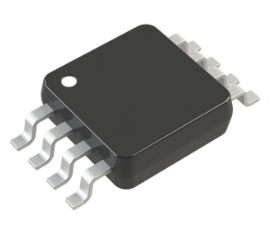- Online chat

ADG419BRMZ
The ADG419BRMZ is a dual single-pole, double-throw (SPDT) analog switch from Analog Devices, designed for high-speed signal routing and precision switching in data acquisition and communication systems. Housed in a compact 8-lead SOIC package, this device operates over a supply voltage range of ±18V or 0V to +36V, enabling flexibility in bipolar and unipolar applications. It features ultra-low on-resistance and fast switching capabilities, minimizing signal distortion in precision instrumentation and high-frequency signal processing.
Key Features
This component provides an on-resistance of 12Ω (max) with exceptional flatness across the signal path, ensuring minimal insertion loss. It supports a -3dB bandwidth of up to 80 MHz, enabling rapid signal switching and high-speed data acquisition. The ADG419BRMZ includes low charge injection (<0.2 pC), reducing transient noise during channel transitions. It operates across an extended temperature range of -40°C to +85°C and features robust ESD protection (2 kV HBM). Its bidirectional switching capability and low crosstalk (< -60 dB at 1 MHz) enhance signal integrity in multiplexed systems.
Applications
Ideal for high-speed test and measurement equipment, medical imaging systems, and industrial process control, this device is widely used in sensor multiplexing, analog front-end configuration, and communication channel switching. It is also employed in automotive infotainment systems, aerospace instrumentation, and portable diagnostic tools requiring low-power, high-reliability signal routing. Its compact SOIC package and precision performance make it suitable for space-constrained embedded designs.
Summary
The ADG419BRMZ combines high-speed switching, ultra-low on-resistance, and robust ESD protection, making it a reliable choice for precision signal switching in industrial, medical, and automotive systems. Its wide voltage range, low noise, and compact form factor simplify integration into applications demanding fast, accurate, and noise-free signal routing. This device is essential for engineers designing high-density analog interfaces in resource-constrained yet performance-critical environments.




